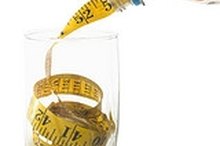Side Effects of Using a Magnetic Bracelet
Over the past decade, the popularity of magnetic therapy and the use of magnetic bracelets has reached its peak, despite the fact that many medical experts refute the validity of it. According to the American Cancer Society, magnetic therapy involves the usage of thin metal magnets, typically mounted on bracelets or necklaces, as a way of relieving the pain caused by arthritis, migraines, stress and poor circulation.
How Safe Are They?
Although the proponents of magnetic therapy, including the Magnetic Therapy Council, claim that "there are no known side effects to using medical magnetic treatments," many users still report some minor side effects that have come about from the usage of these magnetic bracelets and necklaces.
Some of these minor side effects include a warm or hot feeling for the first few days in the areas where the magnets have been placed, according to the Magnetic Therapy Council (MTC).
The MTC attributes this side effect to the increased circulation of blood caused by the magnets and likens the effect to that of the improved circulation that comes with exercise, a process called perfusion.
Tingling and Dizziness
About Icy Hot
Learn More
Feelings of being warm or hot are not the only reported side effects of magnetic therapy however. Some other users have claimed to feel, "tingling and slight dizziness for the first few days of use," according to the MTC.
Just as with the warm feelings in the areas where the magnets are placed on users, the MTC also attributes this sensation of tingling or dizziness to the fact that the magnets are increasing the blood circulation of the person wearing the magnets. They claim that these side effects should only last the first few days, or until the person's body becomes accustomed to the increased blood flow.
- Feelings of being warm or hot are not the only reported side effects of magnetic therapy however.
- Just as with the warm feelings in the areas where the magnets are placed on users, the MTC also attributes this sensation of tingling or dizziness to the fact that the magnets are increasing the blood circulation of the person wearing the magnets.
Rashes and Allergic Reactions
Perhaps the most severe side effects that have been reported to occur in people that use magnetic therapy are rashes. The MTC states that although it is rare, few people have developed a rash or redness on their skin in the areas where the magnets, bracelets or necklaces were placed. In addition to these rashes, there has also been reports of magnetic therapy users feeling nauseous upon placing the magnets on their body.
The MTC claims that there is, "no physiological reason for this to occur," and contends that it cannot be an allergic reaction because the symptoms subside as soon as the magnets are removed from the skin. They also state that it, "does not fit the pattern of an anaphylactic reaction."
The MTC argues that these side effects must be psychosomatic side effects, meaning that, "the symptoms have been manifested due to the person's fear and insecurity about using magnets." According to the MTC, the side effects are simply the body's way of going through the biological processes required to adapt to a new and unfamiliar situation.
- Perhaps the most severe side effects that have been reported to occur in people that use magnetic therapy are rashes.
- The MTC claims that there is, "no physiological reason for this to occur," and contends that it cannot be an allergic reaction because the symptoms subside as soon as the magnets are removed from the skin.
Related Articles
References
- Bausell RB. Snake Oil Science: The Truth about Complementary and Alternative Medicine. New York, NY: Oxford University Press; 2007.
- Weiner RS. Pain Management: A Practical Guide for Clinicians, Sixth Edition. CRS Press: Boca Raton, FL; 2002.
- Arndt M. Bloomberg News. Florsheim Shoes' Magnetic Appeal. July 3, 2000.
- Justia Patents. Dynamic magnetic device and method, and components thereof. Feb 13, 2002.
- Yuksel C, Ankarali S, Yuksel NA. The use of neodymium magnets in healthcare and their effects on health. North Clin Istanb. 2018;5(3):268-273. doi:10.14744/nci.2017.00483
- Winemiller MH, Billow RG, Laskowski ER, Harmsen WS. Effect of magnetic vs sham-magnetic insoles on nonspecific foot pain in the workplace: a randomized, double-blind, placebo-controlled trial. Mayo Clin Proc. 2005;80(9):1138-45. doi:10.4065/80.9.1138
- Jonas WB. Reframing placebo in research and practice. Philos Trans R Soc Lond, B, Biol Sci. 2011;366(1572):1896-904. doi:10.1098/rstb.2010.0405
- Weintraub MI, Wolfe GI, Barohn RA, et al. Static magnetic field therapy for symptomatic diabetic neuropathy: A randomized, double-blind, placebo-controlled trial. Arch Phys Med Rehabil. 2003;84(5):736-46. doi:10.1016/s0003-9993(03)00106-0
- Federal Trade Commission. Federal Trade Commission Decisions Complaint in the Matter of Magnetic Therapeutic Technologies, Inc., et al. 1999.
- Winemiller MH, Billow RG, Laskowski ER, Harmsen WS. Effect of magnetic vs sham-magnetic insoles on plantar heel pain: a randomized controlled trial. JAMA. 2003;290(11):1474-8. doi:10.1001/jama.290.11.1474
- Riskowski J, Dufour AB, Hannan MT. Arthritis, foot pain and shoe wear: current musculoskeletal research on feet. Curr Opin Rheumatol. 2011;23(2):148-55. doi:10.1097/BOR.0b013e3283422cf5
- Basford JR. A historical perspective of the popular use of electric and magnetic therapy. Arch Phys Med Rehabil. 2001;82:1261-9.
- National Center for Complementary and Integrative Health. Magnets. Updated February 2013.
Writer Bio
Robert Moreschi has been writing since 2008. His work appears on Web sites such as Gear Up For Sports, where he covers the New York Giants and the New York Mets. Moreschi has a Bachelor of Science in journalism and media studies from Rutgers University.









